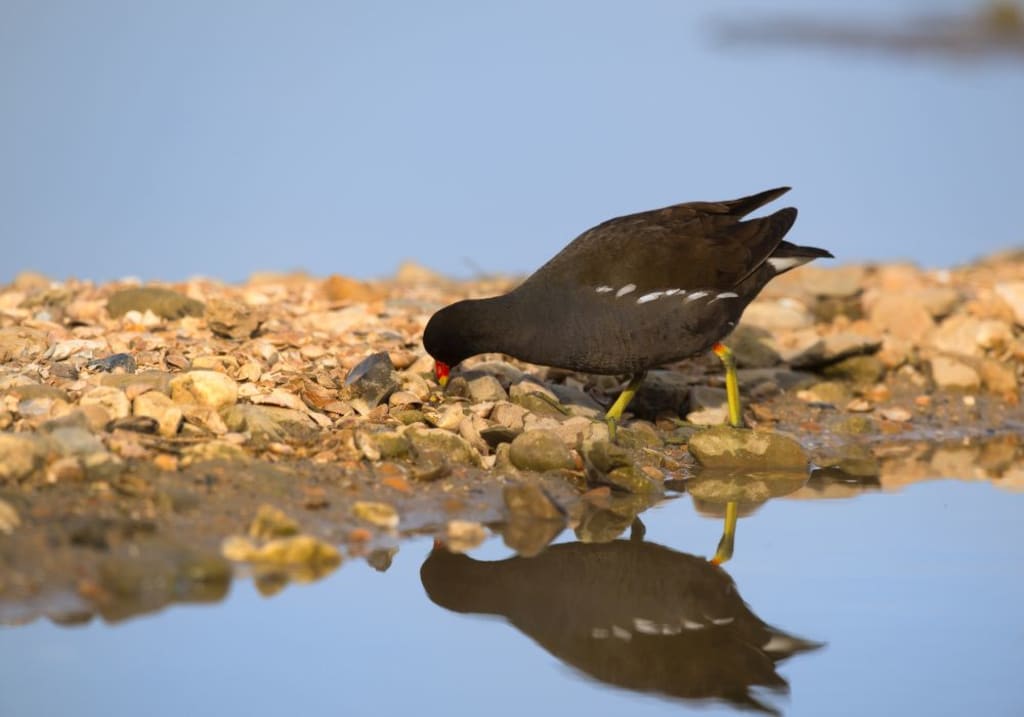
North America is home to a diverse array of waterfowl species, including ducks, geese, and swans. These birds play a vital role in the continent's ecosystems, serving as important indicators of environmental health and providing recreational opportunities for birdwatchers and hunters alike. In this comprehensive guide, we'll explore some of the most common waterfowl species found in North America, their habitats, and their unique characteristics.
Ducks
Ducks are the most numerous and diverse group of waterfowl in North America, with over 30 native species. These birds can be further divided into two main categories: dabbling ducks and diving ducks.
Dabbling Ducks
Dabbling ducks are known for their ability to feed on the surface of the water or by tipping their bodies forward to reach food in shallow waters. Some of the most common dabbling duck species in North America include:
- Mallard (Anas platyrhynchos) : The mallard is one of the most recognizable and widespread duck species in North America. These birds can be found in a variety of wetland habitats, from ponds and lakes to marshes and rivers.
- American Wigeon (Mareca americana) : The American wigeon is a medium-sized duck known for its distinctive green patch on the side of its head. These birds are often found in shallow, freshwater habitats.
- Northern Pintail (Anas acuta) : The northern pintail is a slender, long-necked duck with a distinctive pointed tail. These birds are commonly found in open wetlands and agricultural areas.
- Blue-winged Teal (Spatula discors) : The blue-winged teal is a small, fast-flying duck that is known for its distinctive blue wing patch. These birds are often found in shallow, marshy habitats.
- Green-winged Teal (Anas crecca) : The green-winged teal is a small, agile duck that is known for its distinctive green wing patch. These birds are commonly found in a variety of wetland habitats.
Diving Ducks
Diving ducks are adapted to feed in deeper waters, using their powerful legs and webbed feet to dive and pursue their prey. Some of the most common diving duck species in North America include:
- Canvasback (Aythya valisineria) : The canvasback is a large, distinctive duck with a sloping forehead and a distinctive black bill. These birds are often found in deep, open waters.
- Redhead (Aythya americana) : The redhead is a medium-sized duck with a distinctive reddish-brown head and a gray body. These birds are commonly found in shallow, freshwater habitats.
- Ring-necked Duck (Aythya collaris) : The ring-necked duck is a medium-sized duck with a distinctive white ring around its bill. These birds are often found in wooded wetlands and lakes.
- Lesser Scaup (Aythya affinis) : The lesser scaup is a small, diving duck with a distinctive black head and white sides. These birds are commonly found in deep, open waters.
- Bufflehead (Bucephala albeola) : The bufflehead is a small, diving duck with a distinctive white patch on the back of its head. These birds are often found in sheltered bays and coves.
Geese
Geese are larger, more terrestrial members of the waterfowl family. In North America, there are several species of native and introduced geese, including:
- Canada Goose (Branta canadensis) : The Canada goose is one of the most recognizable and widespread goose species in North America. These birds are known for their distinctive black head and neck, with a white chin strap.
- Snow Goose (Chen caerulescens) : The snow goose is a large, white goose with black wing tips. These birds are often found in large flocks in coastal and agricultural areas.
- Greater White-fronted Goose (Anser albifrons) : The greater white-fronted goose is a medium-sized goose with a distinctive white forehead and orange bill. These birds are commonly found in open wetlands and agricultural areas.
- Brant (Branta bernicla) : The brant is a small, dark goose that is often found in coastal habitats, particularly near eelgrass beds.
- Ross's Goose (Chen rossii) : The Ross's goose is a small, white goose that is closely related to the snow goose. These birds are often found in mixed flocks with snow geese.
Swans
Swans are the largest members of the waterfowl family, with two native species found in North America:
- Trumpeter Swan (Cygnus buccinator) : The trumpeter swan is the largest waterfowl species in North America, with a wingspan that can reach over 8 feet. These birds are known for their distinctive all-white plumage and black bill.
- Tundra Swan (Cygnus columbianus) : The tundra swan is a medium-sized swan with a distinctive yellow spot in front of the eye. These birds are often found in open wetlands and coastal areas.
- In addition to these native species, the mute swan (Cygnus olor) is an introduced species that has established populations in some areas of North America.
Habitat and Conservation
Waterfowl species in North America are found in a variety of wetland habitats, including marshes, lakes, rivers, and coastal areas. Many species rely on these habitats for breeding, feeding, and wintering grounds, making them particularly vulnerable to habitat loss and degradation.
Conservation efforts for waterfowl in North America have been ongoing for decades, with organizations like the North American Waterfowl Management Plan (NAWMP) working to protect and restore critical wetland habitats. These efforts have helped to stabilize and even increase the populations of some waterfowl species, but many challenges remain, such as the impacts of climate change, urbanization, and agricultural practices.
By understanding the diversity and importance of waterfowl species in North America, we can better appreciate the need for continued conservation efforts and work to ensure that these birds continue to thrive in the years to come.
About the Creator
Hasan
Welcome...
In this site of mine you can learn amazing things and many information that you don't know so please subscribe to my site.
Enjoyed the story? Support the Creator.
Subscribe for free to receive all their stories in your feed. You could also pledge your support or give them a one-off tip, letting them know you appreciate their work.






Comments
There are no comments for this story
Be the first to respond and start the conversation.